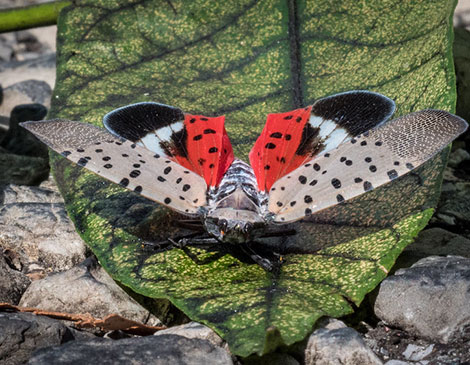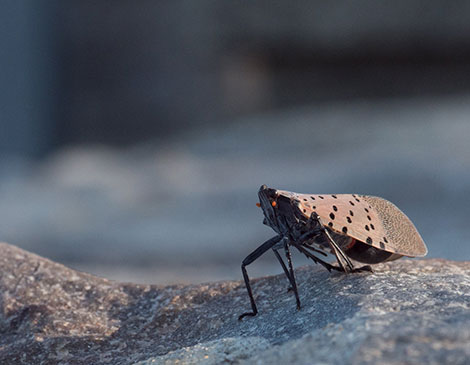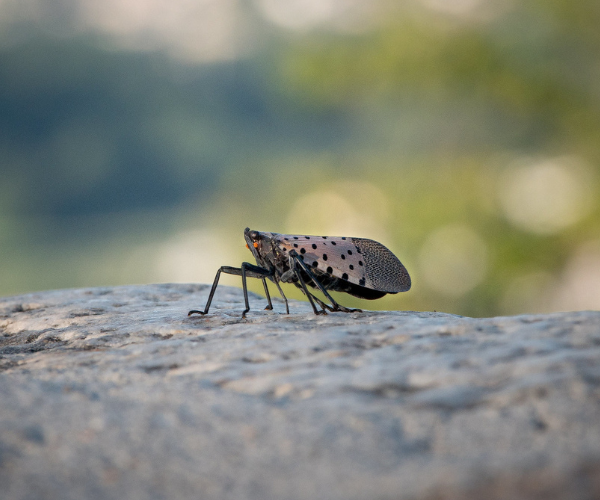You might have seen one, or 100, spotted lanternflies swarming parts of Cleveland this summer and autumn.
Here’s what you should know about the invasive bug and its impacts on Northeast Ohio.
The Spotted Lanternfly Took a Big Journey.
The bug, native to Asia, was first found in Pennsylvania in 2014, says Ohio Department of Agriculture Inspection Manager Jonathan Shields. It was first found in Ohio in 2020 in Jefferson County, and was spotted in downtown Cleveland in 2021 — but it had likely been here for a few years at that point.
Now, the spotted lanternfly is found all along the North coast of Ohio, in between Cleveland and Toledo.
RELATED: Bobcats are Bouncing Back in Ohio
“It definitely seems to follow transportation corridors, so we do see it in a lot of urban areas where you get a lot of railroads and highways that come together,” Shields says. “Throughout Cleveland, you have a lot of railroad lines that come through and criss-cross in the city. That’s our leading suspect for how it got here; it was riding the rails from further east.”
Look for Striking Patterns.
The spotted lanternfly starts out small, about the size of a tick, and grows to become an inch long with spotted wings; the hind wing is bright red with a white and a black bar, creating a bold, hard-to-mistake pattern.
You might be seeing a lot of them in Cleveland right now, Shields says. The bug matures in the late summer and early fall, and lays eggs through November.
Also, there’s just more of them around right now. “The population has been building in Cleveland year over year,” Shields says. “It's just kind of getting up to a level now where it's harder to avoid seeing them.”
RELATED: Woman Hikes Every Mile Of Cuyahoga Valley National Park

They’re Destructive.
Spotted Lanternflies feed on the sap of between 70 to 100 types of plants — including agriculturally important ones, like grapes.
“In Ohio, we have an $8 billion grape industry, so there’s a lot of potential economic impact from these feeding on grape vines and potentially making the fruit not usable,” Shields says.
Beyond grapes, spotted lanternflies have also killed some plants from feeding on their sap, but usually, they cause problems from secondary infections caused by their sugary waste, which causes sooty mold to grow on trees. In turn, the sooty mold could also grow on surfaces outside like decks and sidewalks.
They’re Not Alone.
Shields cited a couple of other invasive bugs ODA has been watching, including two in Southwest Ohio: the Box Tree Moth and the Asian Longhorn Beetle. Thanks to ODA programs, the Asian Longhorn Beetle is moving toward eradication, Shields says.
“We have a number of these pests and it's really a product of a global economy, with materials moving all around the world,” Shields says. “Unfortunately, sometimes you get these critters that move along with those materials — and it happens both ways. We hear a lot of folks that get upset about this stuff coming in, but we're sending stuff out as well.
RELATED: 9 Unique Underwater Creatures That Call Lake Erie Home
Slow the Spread.
Clevelanders and anyone who lives in a city with confirmed infestations of spotted lanternflies are encouraged to check themselves and their vehicles before traveling, to avoid bringing hitchhiking spotted lanternflies with them, Shields says.
Beyond that — if you’re in an area with confirmed populations of spotted lanternflies, kill them if you’re able to. If you’re dealing with an infestation or a large amount of spotted lanternflies, look to Penn State University’s management guide for more information on treatments.
In areas where spotted lanternflies haven’t been reported, report them at agri.ohio.gov/slf — upload a photo and information about the sighting.
RELATED: This Little Owl Was Found in Public Square's Christmas Tree
The goal is to slow down how quickly spotted lanternflies travel, to allow more time for scientific research on control methods, Shields says.
“With only a couple exceptions, the spotted lantern fly infestations that we found in Ohio have been the result of public reports,” Shields says. “Obviously, we rely on those reports. We welcome those reports, to help guide our future surveys.”
For more updates about Cleveland, sign up for our Cleveland Magazine Daily newsletter, delivered to your inbox six times a week.
Cleveland Magazine is also available in print, publishing 12 times a year with immersive features, helpful guides and beautiful photography and design.




